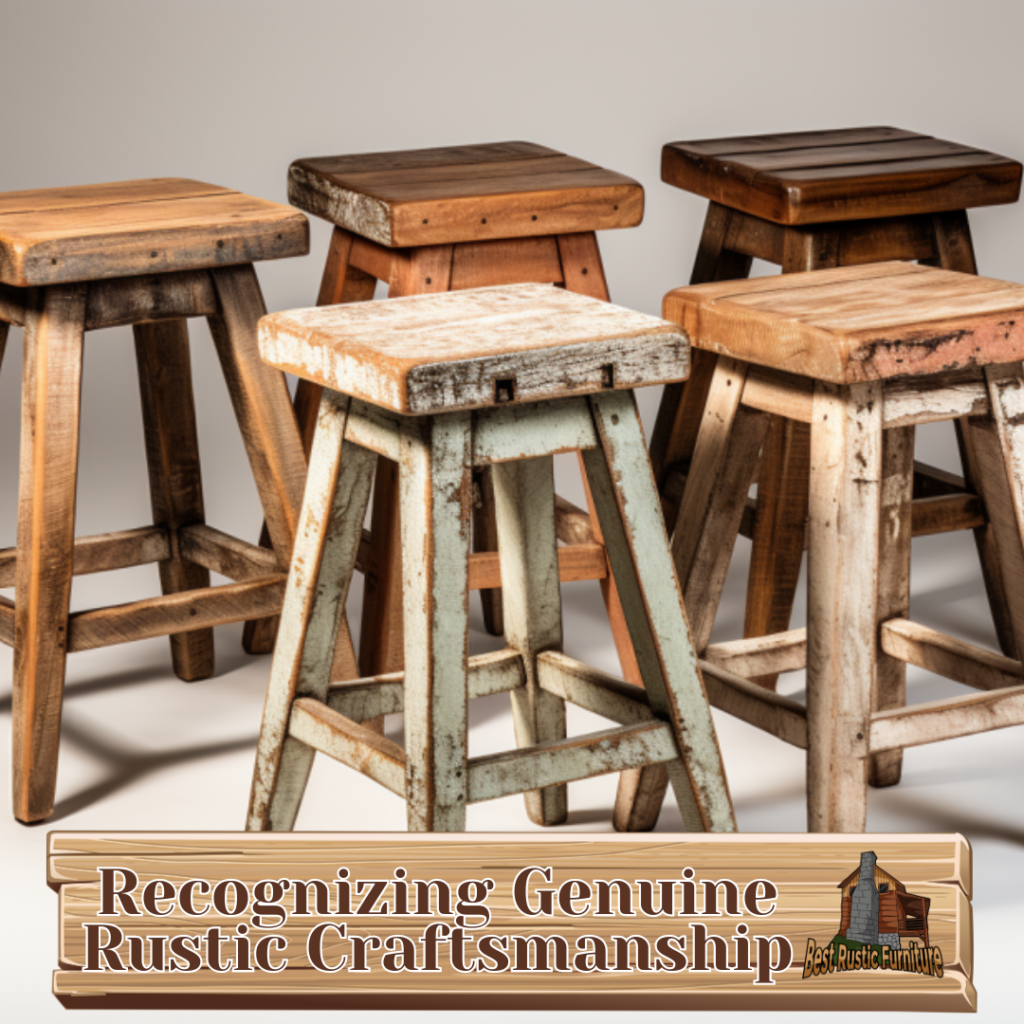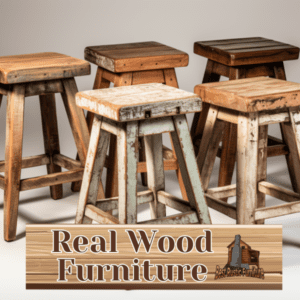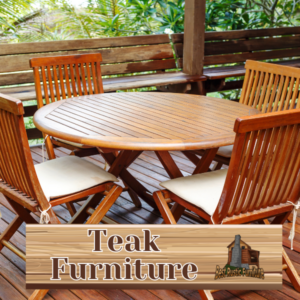
Rustic craftsmanship is a popular style that exudes charm and authenticity. Understanding and recognizing genuine rustic craftsmanship can help you make informed choices when it comes to selecting rustic furniture, decor, or other handmade pieces. By delving into the intricacies of this art form, you can appreciate the skill and attention to detail that goes into creating these unique pieces.
To decipher quality and identify genuine rustic craftsmanship, it’s important to recognize the key characteristics that set it apart. These characteristics include the use of natural materials, handcrafted techniques, distressed finishes, and the presence of imperfections and irregularities that add to its charm.
On the other hand, identifying high-quality rustic craftsmanship involves looking for fine attention to detail, sturdy construction, symmetry and proportion, and the quality of joinery and joints. These factors contribute to the overall durability and longevity of the piece.
However, it’s crucial to be aware that there are instances of counterfeit or fake rustic craftsmanship. Spotting fake rustic craftsmanship involves looking out for the use of synthetic materials, a machine-made look, overly uniform appearance, and a lack of distressed features that are typically found in genuine rustic pieces.
Factors such as the quality of materials, complexity of design, workmanship and skill involved, as well as rarity and demand, can significantly influence the price of rustic craftsmanship. Understanding these factors can help you make informed decisions when it comes to investing in rustic pieces that stand the test of time and bring a touch of authenticity to your space.
By understanding the nuances of genuine rustic craftsmanship and being able to differentiate it from imitations, you can make confident choices when selecting rustic pieces that truly showcase the beauty and artistry of this style.
Key takeaways:
- Genuine rustic craftsmanship utilizes natural materials: The use of natural materials is a characteristic feature of genuine rustic craftsmanship, providing an authentic and organic aesthetic.
- Fine attention to detail indicates high-quality rustic craftsmanship: Genuine rustic craftsmanship involves meticulous attention to detail, ensuring sturdy construction, symmetrical proportions, and high-quality joinery.
- Fake rustic craftsmanship lacks distressed features: Spotting fake rustic craftsmanship involves identifying the absence of distressed finishes and the presence of synthetic materials or a machine-made look.
Understanding Rustic Craftsmanship
Understanding rustic craftsmanship involves appreciating the authenticity and artistic skill involved in creating handmade, rustic pieces. This style of craftsmanship embraces imperfections and celebrates the natural beauty of materials. It often involves traditional techniques passed down through generations, resulting in unique and one-of-a-kind creations. By understanding rustic craftsmanship, you can develop a deeper appreciation for the history and culture behind these pieces and support the artisans who dedicate their time and skill to preserving this traditional art form.
In the 18th century, during the colonization of the American West, settlers relied on rustic craftsmanship to build log cabins and furniture. They would source materials from the land and use simple tools to craft functional and durable pieces. These rustic creations not only served a practical purpose but also reflected the settlers’ connection to the natural world and their resourcefulness. Today, this rich history continues to inspire artisans who carry on the tradition of rustic craftsmanship, creating unique and timeless pieces that capture the spirit of the past.
Characteristics of Genuine Rustic Craftsmanship
Crafted with expertise and authenticity, genuine rustic craftsmanship embodies a world of its own. In this section, we’ll explore the defining characteristics that set apart these remarkable creations. We’ll uncover the significance of using natural materials, delve into the artistry of handcrafted techniques, appreciate the beauty of distressed finishes, and embrace the charm found in imperfections and irregularities. Get ready to embark on a journey through the intricate tapestry of true rustic craftsmanship.
Use of Natural Materials
The use of natural materials is an essential characteristic that defines authentic rustic craftsmanship. When assessing rustic pieces, it is important to look for the following:
- Wood: Genuine rustic furniture is crafted from solid wood, such as oak, pine, or cedar.
- Stone: Natural stone accents, like granite or slate, are often incorporated into rustic decor.
- Leather: Upholstery or accents made of genuine leather are frequently found in rustic craftsmanship.
- Wrought Iron: Handcrafted elements of wrought iron add a rustic touch to furniture or fixtures.
- Antlers: Animal antlers are sometimes used in rustic decor to enhance its organic feel.
By meticulously examining the materials used, you can easily determine whether a piece truly showcases the artistry of rustic craftsmanship.
Handcrafted Techniques
- Design and Planning:
The artisan begins the process of handcrafted techniques by conceptualizing the design and planning the details.
- Selection of Materials:
For their authenticity and durability, skilled artisans choose high-quality natural materials like wood and stone for their handcrafted techniques.
- Handworking:
With precision and care, artisans employ various hand tools to shape, carve, and mold the materials in their handcrafted techniques.
- Joinery and Assembly:
Sturdy construction is achieved through the use of traditional joinery techniques such as mortise and tenon or dovetail joints in handcrafted techniques.
- Finishing and Detailing:
To achieve the desired aesthetic, each piece is meticulously sanded, polished, and finished by hand in their handcrafted techniques.
These handcrafted techniques guarantee that each piece possesses a unique charm and character, distinguishing it from mass-produced items.
Distressed Finishes
Enclosed key answers and important phrases are an integral aspect of authentic rustic craftsmanship, contributing to the aged and weathered aesthetic of furniture or decor and enhancing its rustic allure. When identifying distressed finishes, it is important to consider the following factors in a natural and organic manner:
- Authenticity: Genuine distressed finishes exhibit a natural and organic appearance, showcasing wear and tear that aligns with the age of the piece.
- Texture: Distressed finishes often showcase surfaces with irregularities, rough edges, and deliberate imperfections.
- Techniques: Be on the lookout for indications of hand sanding, scraping, or the presence of wormholes, as these are commonly employed to achieve the desired distressed effects.
- Color and Layers: Distressed finishes may unveil layers of paint or stain, displaying variations in color and intensity, adding to the overall appeal.
Pro tip: To further enhance the distressed appearance of furniture, consider applying a layer of crackle medium prior to painting. This technique contributes to an even more pronounced aged and weathered look.
Imperfections and Irregularities
Imperfections and irregularities are key characteristics of genuine rustic craftsmanship. These imperfections and irregularities not only add charm and uniqueness to the piece but also showcase the handcrafted nature of the work. When looking for a truly authentic piece, it is important to embrace and appreciate the imperfections and irregularities that may be present. Some common imperfections and irregularities to look for include uneven edges or surfaces, natural cracks or knots in the wood, variations in color or texture, hand-applied finishes that may have slight variations, and asymmetry in design. Rather than seeing these imperfections as flaws, they should be seen as signs of authenticity and craftsmanship. Embracing these imperfections can contribute to the overall charm and character of the piece. So, when assessing rustic craftsmanship, remember to embrace the imperfections and appreciate the unique beauty they bring to the piece.
Identifying High-Quality Rustic Craftsmanship
When it comes to identifying high-quality rustic craftsmanship, the devil is in the details. In this section, we’ll unlock the secrets of genuine rustic craftsmanship by examining key factors that set it apart. From the fine attention to detail that showcases the artisan’s skill to the sturdy construction that ensures longevity, we’ll explore the hallmarks of exceptional craftsmanship. We’ll unveil the significance of symmetry and proportion, as well as the quality of joinery and joints, in determining the authenticity and value of rustic creations. Get ready to discover the true essence of quality!
Fine Attention to Detail
| Characteristics of Genuine Rustic Craftsmanship: |
| – Fine attention to detail |
| – Sturdy construction |
| – Symmetry and proportion |
| – Quality of joinery and joints |
In genuine rustic craftsmanship, meticulous attention to detail is a prominent characteristic. Skilled artisans painstakingly craft each piece, ensuring that intricate details are meticulously incorporated. From meticulously hand-carved motifs to carefully distressed finishes, every element is thoughtfully executed. This meticulous attention to detail adds a unique charm and authenticity to the furniture or decor. It is this level of craftsmanship that sets genuine rustic pieces apart and enhances their overall appeal.
Rustic craftsmanship has a rich history dating back centuries. In early times, it was born out of necessity, with people using local materials and employing handcrafted techniques to create functional and durable pieces. Over time, rustic craftsmanship evolved into an art form, incorporating both practicality and aesthetics. Today, it continues to be admired and desired for its meticulous attention to detail and its ability to bring a touch of warmth and character to any space.
Sturdy Construction
Sturdy construction is a vital characteristic of authentic rustic craftsmanship. It guarantees durability and long-lasting quality. Here are some key elements that contribute to the sturdy construction:
| 1. Quality Materials | Utilizing high-grade materials like solid wood and metal ensures strength and resistance to wear and tear. |
| 2. Solid Joinery | Incorporating traditional joinery techniques such as mortise and tenon or dovetail joints improves structural integrity. |
| 3. Reinforced Framework | Adding reinforcements like corner blocks and struts provides additional stability and support. |
| 4. Robust Construction | Avoiding shortcuts and employing solid construction methods like thick legs and sturdy frameworks adds strength to the piece. |
By considering these factors, you can identify rustic craftsmanship that exemplifies sturdy construction, ensuring that your furniture or decor stands the test of time.
Symmetry and Proportion
Symmetry and proportion are fundamental aspects of authentic rustic craftsmanship, as they play a significant role in the overall equilibrium and visual allure of an item. When evaluating a rustic object, it is vital to consider the following factors:
| Characteristics | Indicators of Quality |
| Symmetry | Even and well-balanced design, with matching elements on both sides. |
| Proportion | Appropriate scale and size of different components, ensuring harmony. |
By analyzing symmetry and proportion in a rustic piece, you can distinguish the level of expertise and meticulousness dedicated to its creation.
Quality of Joinery and Joints
The quality of joinery and joints plays a significant role in evaluating the craftsmanship of rustic furniture. Here are some essential aspects to consider:
- Secure and tight joints: When examining furniture pieces, look for well-fitted joints that are not loose or wobbly. This demonstrates the use of precise techniques and skilled craftsmanship.
- Visible joinery: Genuine rustic furniture often showcases its joinery as a decorative element. Pay close attention to visible dovetail, mortise and tenon, or tongue and groove joints, as they highlight the skill and attention to detail.
- No gaps or misalignments: Carefully inspect the joints for any gaps or misalignments. High-quality joinery should provide seamless connections without noticeable flaws.
- Strength and durability: The overall strength and durability of the furniture depend on well-constructed joints. They should be capable of withstanding regular use without weakening or breaking.
Pro-tip: To assess the quality of joinery and joints, gently wiggle or apply pressure to the furniture to check its stability. A well-made piece will feel sturdy and robust.
Spotting Fake Rustic Craftsmanship
Unveiling the secrets of spotting fake rustic craftsmanship, we dive into four key indicators that will help you sharpen your discerning eye. From the use of synthetic materials to the telltale signs of a machine-made look, and from an overly uniform appearance to the absence of distressed features, we will navigate through the realm of genuine rustic craftsmanship, helping you separate the authentic from the imitations. So get ready to decode the true essence of quality and make informed choices in your quest for rustic beauty.
Use of Synthetic Materials
When evaluating rustic craftsmanship, it’s important to identify the use of synthetic materials. These materials can affect the authenticity and overall quality of the piece.
| Characteristics | Significance |
| 1. Use of Natural Materials | Genuine rustic craftsmanship is known for using authentic, natural materials such as wood, stone, and metal. |
| 2. Handcrafted Techniques | Authentic rustic pieces are created using traditional, manual techniques, showcasing the skill and artistry of the craftsman. |
| 3. Distressed Finishes | Rustic craftsmanship often includes intentional distressing techniques to create an aged, weathered appearance. |
| 4. Imperfections and Irregularities | Genuine rustic pieces embrace imperfections and irregularities, as they add character and uniqueness to the final product. |
| Spotting Fake Rustic Craftsmanship | Identifying the use of synthetic materials is a key indicator of fake rustic craftsmanship, as they do not align with the authentic rustic aesthetic. |
When purchasing rustic pieces, it’s important to carefully inspect the materials used and look for signs of authenticity. Avoid pieces that appear overly uniform or have a machine-made look, as these are likely to incorporate synthetic materials. Opt for craftspeople who prioritize natural materials and handcrafted techniques for genuine rustic craftsmanship.
Machine-Made Look
A characteristic of fake rustic craftsmanship is the presence of a machine-made look. To help identify this, here are some indicators:
| Indicators | Description |
| Uniformity and Precision | Items with a machine-made look tend to exhibit perfect symmetry and precise measurements, lacking the natural irregularities commonly found in handmade pieces. |
| Lack of Distressed Features | One of the key characteristics of machine-made items is the absence of intentional wear and distressing, which are crucial for providing genuine rustic craftsmanship with its unique charm. |
| Lack of Handcrafted Touches | Machine-made pieces lack the subtle imperfections and signs of handcrafted techniques that are typically present in genuinely rustic craftsmanship. |
| Lack of Individuality | Machine-made items are often mass-produced, resulting in products that lack the uniqueness and individuality commonly found in handmade pieces. |
Overly Uniform Appearance
An overly uniform appearance is something that you should always be cautious of when trying to identify fake rustic craftsmanship. Genuine rustic pieces will often have imperfections and irregularities that actually contribute to their unique charm. So, here are a few signs you should keep an eye out for to spot an overly uniform appearance:
- Look for perfectly straight lines or edges
- Check if the surfaces are smooth and flawless
- See if there are no signs of wear or distressing
- Take notice if there is a lack of natural variations in color or texture
When evaluating rustic craftsmanship, pay close attention to these inconsistencies and natural elements as they are strong indicators of authenticity.
Lack of Distressed Features
To truly appreciate true rustic craftsmanship, it is vital to detect the absence of distressed features. Here are some indicators to consider:
- Smooth and even surfaces devoid of any intentional signs of aging or weathering.
- No visible marks, scratches, or dents that suggest usage and deterioration.
- Consistent color and finish across the entire piece, without deliberate variations or patina.
- Precise and symmetrical construction, lacking irregularities or asymmetry.
Remember, the lack of distressed features implies that the item might not possess authentic rustic characteristics. Pro-tip: Observe the small details and imperfections, as genuine rustic craftsmanship embraces the allure of natural flaws.
Factors Influencing the Price of Rustic Craftsmanship
In the world of rustic craftsmanship, various factors come into play when determining the price. From the quality of materials to the complexity of design, the workmanship and skill involved, as well as the rarity and demand, each of these sub-sections sheds light on the unique elements influencing the cost. So, let’s dive into the intricacies that dictate the value of genuine rustic craftsmanship.
Quality of Materials
| Factors | Description |
| 1. Quality of Materials | Genuine rustic craftsmanship relies on the use of high-quality, authentic, natural materials such as solid wood, stone, and metal. |
| 2. Durability | The quality of materials used ensures the longevity and sturdiness of rustic pieces, allowing them to withstand everyday use. |
| 3. Aesthetics | Premium materials like reclaimed wood, aged metals, and natural stone contribute to the unique and authentic appearance of rustic craftsmanship. |
| 4. Sustainability | Utilizing eco-friendly and sustainable materials promotes responsible production methods and reduces environmental impact. |
The quality of materials, specifically the quality of materials used in rustic craftsmanship, plays a significant role in determining the overall quality of the finished product. Here is a table that highlights the importance of quality materials in rustic craftsmanship. The use of high-quality, authentic, and natural materials such as solid wood, stone, and metal is crucial for genuine rustic craftsmanship. These materials contribute to the durability and sturdiness of rustic pieces, allowing them to withstand everyday use. Additionally, premium materials like reclaimed wood, aged metals, and natural stone enhance the aesthetics of rustic craftsmanship, giving it a unique and authentic appearance. Furthermore, utilizing eco-friendly and sustainable materials not only adds to the overall quality of rustic craftsmanship but also promotes responsible production methods and reduces environmental impact.
Complexity of Design
To assess the complexity of design in rustic craftsmanship and understand the intricacies involved, one must consider a variety of factors. These factors encompass intricate patterns, detailed carvings, and elaborate joinery techniques. The number of components utilized and the level of craftsmanship required provide valuable insights into the complexity of a design. Additionally, the materials employed, such as reclaimed wood and metal, can substantially contribute to the overall complexity. It is important to note that the more unique and intricate a design is, the greater the complexity it possesses. When evaluating rustic pieces, it is crucial to seek out and appreciate the intricacies found within the details, the fine joinery, and the harmonious arrangement of the components. An exemplary illustration of the sheer complexity in design is the remarkable tale of a hand-carved wooden chest featuring intricate floral patterns and concealed compartments, thereby showcasing the artisan’s unrivaled skill and meticulous attention to detail.
Workmanship and Skill
When evaluating the quality of rustic craftsmanship, workmanship and skill are vital considerations. To determine the level of workmanship and skill, one can look for:
| Attention to detail: | Genuine rustic craftsmanship showcases intricate and meticulous handiwork throughout the piece. |
|---|---|
| Sturdy construction: | Skillful workmanship ensures that the furniture or item is solidly built, with careful consideration given to its structural integrity. |
| Symmetry and proportion: | A skilled artisan will create a piece that balances proportions and exhibits precise symmetry. |
| Quality of joinery and joints: | Well-crafted rustic pieces have seamless and durable joinery, with no loose or weak connections. |
By assessing these aspects, one can recognize the level of workmanship and skill that has gone into creating a piece of genuine rustic craftsmanship.
Rarity and Demand
| Factors Affecting Rarity and Demand |
| 1. Unique Design |
| 2. Limited Production |
| 3. Historical Significance |
| 4. Cultural Relevance |
Rustic craftsmanship that is rare and in high demand can command a higher price. The uniqueness of the design, limited availability, along with historical and cultural significance contribute to the rarity and desirability of rustic pieces. For example, a handcrafted piece by a renowned artisan from a specific region that reflects traditional craftsmanship techniques would be considered rare and sought after by collectors. Understanding the factors that influence rarity and demand can help discern high-quality rustic craftsmanship from imitations.
In history, rustic craftsmanship gained popularity during the Arts and Crafts movement in the late 19th and early 20th centuries. Handmade furniture and decorative items inspired by nature and the simplicity of rural life were highly valued. Today, these pieces continue to captivate enthusiasts who appreciate the charm and authenticity of genuine rustic craftsmanship.
Some Facts About “Deciphering Quality: Recognizing Genuine Rustic Craftsmanship”:
- ✅ Hand hewn beams are timbers shaped using a broad ax.
- ✅ They have a unique texture that cannot be replicated by machines.
- ✅ Rustic beams add character and a sense of history to any space.
- ✅ Authentic hand hewn beams display rough edges, tool marks, signs of age, and a rich patina.
- ✅ These beams are often salvaged from old buildings and may show wear, slight warping, and twisting due to exposure.
Frequently Asked Questions
1. How can I identify authentic hand hewn beams?
To identify authentic hand hewn beams, look for rough edges, tool marks, signs of age, and a rich patina that develops over time. These beams are often salvaged from old buildings, so expect wear and tear, slight warping, and twisting due to exposure to changing temperatures and humidity levels.
2. What are some creative ways to incorporate hand hewn beams into my home?
There are various creative ways to incorporate hand hewn beams into your home. You can use exposed beams on the ceiling to become a statement piece in a living room, bedroom, or kitchen. They can also be used as fireplace mantels, open shelving, or door and window trim to add a rustic touch.
3. How are hand hewn beams made?
When cutting and shaping hand hewn timbers, start with rough-cut timber, preferably greenwood. Use a broad ax to carefully hew the wood, cutting away rounded edges to create a flat surface. Work with the natural shape and grain of the wood for an authentic look, and finish off with a drawknife or plane for a uniform texture.
4. Can installing hand hewn beams increase the resale value of my home?
Although there is no guaranteed correlation between the installation of hand hewn beams and an increase in the resale value of a home, these rustic features have a charm that appeals to potential buyers. Proper maintenance and professional installation are important for maximum reliability and longevity.
5. What is the difference between craftsmanship and quality?
Craftsmanship refers to the skill, care, and attention to detail that goes into creating a product using traditional techniques and modern technology. Quality, on the other hand, refers to the overall level of excellence or superiority of a product, measured through factors such as durability, reliability, and customer satisfaction.
6. Is craftsmanship or quality more important?
Both craftsmanship and quality are important in creating something of value. Craftsmanship adds uniqueness and artistry to a product, while quality ensures that the product meets its intended purpose and performs well over time. The balance between the two depends on the specific context and requirements of the product or project.






